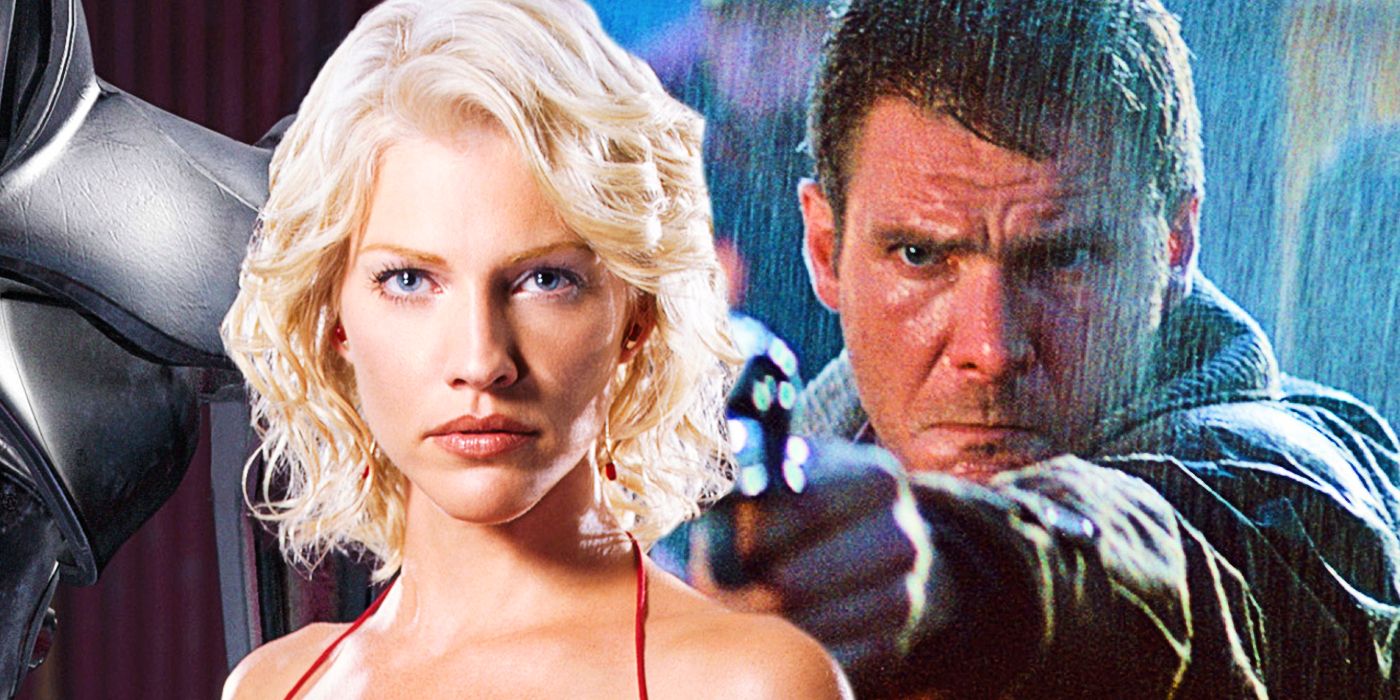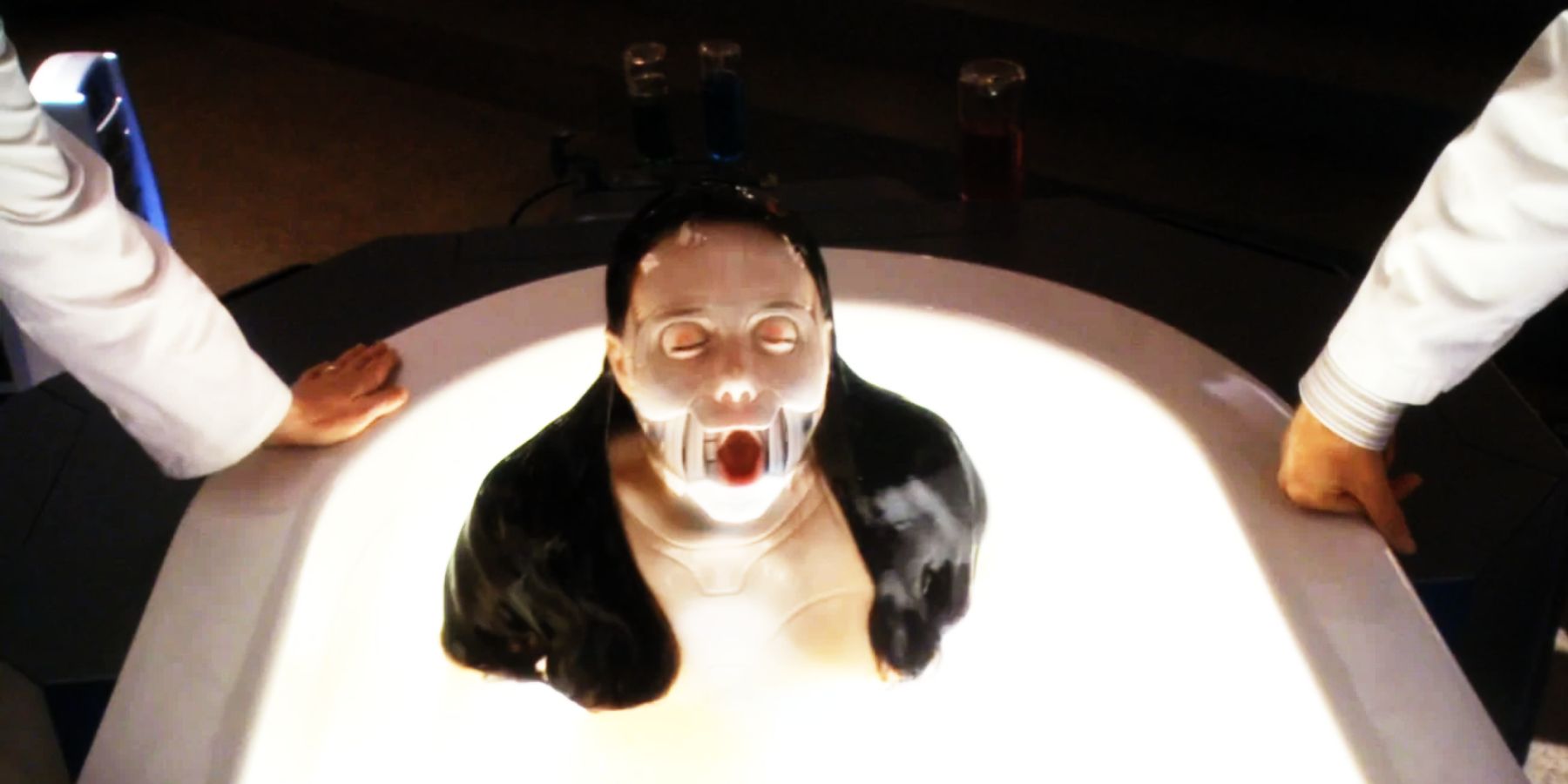The early 2000s remake of Battlestar Galactica had a derogatory term for its organic Cylon sleepers which was a nod to a classic sci-fi with links to star Edward James Olmos. Ronald D Moore's re-imagining of the 1970s sci-fi show about a war between mankind and machines provides the villainous Cylons with a new, more humanoid appearance referred to as "skinjobs". Previously, the short-lived spinoff series Galactica 1980 featured a humanoid Cylon called Andromus in season 1, episodes 7 and 8, the 2-parter "The Night The Cylons Landed". The 2000s Battlestar update made this more humanoid form the dominant style of Cylon, allowing them to infiltrate human society and, as is revealed later in the series, the Galactica itself.
There were 12 humanoid Cylon models in existence at the time of the attack on the Twelve Colonies of Kobol that kick-started Moore's Battlestar Galactica series. These 12 models were split into two groups - the Significant Seven and the Final Five. The identities of the Significant Seven are the first to be revealed, including Battlestar regulars Six (Tricia Helfer) and Sharon (Grace Park). The identities of the Final Five remain a mystery until four of them are shockingly revealed to be members of the Battlestar crew, including executive officer Saul Tigh (Michael Hogan), in the season 3 finale.
The fact that the Cylons can so easily infiltrate humanity, and the grueling and brutal nature of the Cylon war leads to many characters refer to these organic droids as "skin jobs". This term was originally coined in 1982's sci-fi classic Blade Runner, in which Rick Deckard (Harrison Ford) is tasked with tracking down and decommissioning rogue Replicants. As in Battlestar, humanity is distrusting and hostile towards Replicants, derogatorily referring to them as "skinjobs". Blade Runner also starred Edward James Olmos as Deckard's fellow Blade Runner, Gaff. The similarity between the Cylons and the Replicants, and the casting of Olmos as Captain Adama means that the inclusion of "skinjob" is an affectionate nod to Ridley Scott's adaptation of the Philip K Dick novel Do Androids Dream Of Electric Sheep? However, the Battlestar prequel series Caprica provided an in-universe origin for the term.
Battlestar Added A Strange Origin Story For "Skin-Job"
Taking place earlier in the Battlestar Galactica timeline, Caprica depicts the origins of the Cylons on the titular colony almost six decades prior to the destruction of the Twelve Colonies. Following the devastating loss of his daughter Zoe (Alessandra Torresani), Daniel Graystone (Eric Stoltz) embarks on an obsessive quest to bring her back via artificial intelligence and robotics. Zoe's consciousness was preserved digitally in the form of a virtual reality avatar. Graystone considers the possibility of downloading it into a cybernetic body encased in synthetic skin, thus replicating his deceased daughter.
When Zoe is informed of these plans by her father and mother Amanda (Paula Malcomson), Zoe dubs the new process a "skinjob". In this context, it's not the derogatory term that will later join the list of Battlestar Galactica's creative swear words. It's instead a nod to Zoe's mother's job as a plastic surgeon, linking the process with real-world corrective surgery. It's a means for the digital version of Zoe to integrate with Caprican society, not as an enemy agent, but as a young woman living the life she could have had before she was killed in a terrorist attack. Sadly, in their well-meaning attempts to give their daughter her life back, Daniel and Amanda set in motion a chain of events that will lead to the devastating Cylon uprising in Battlestar Galactica.


